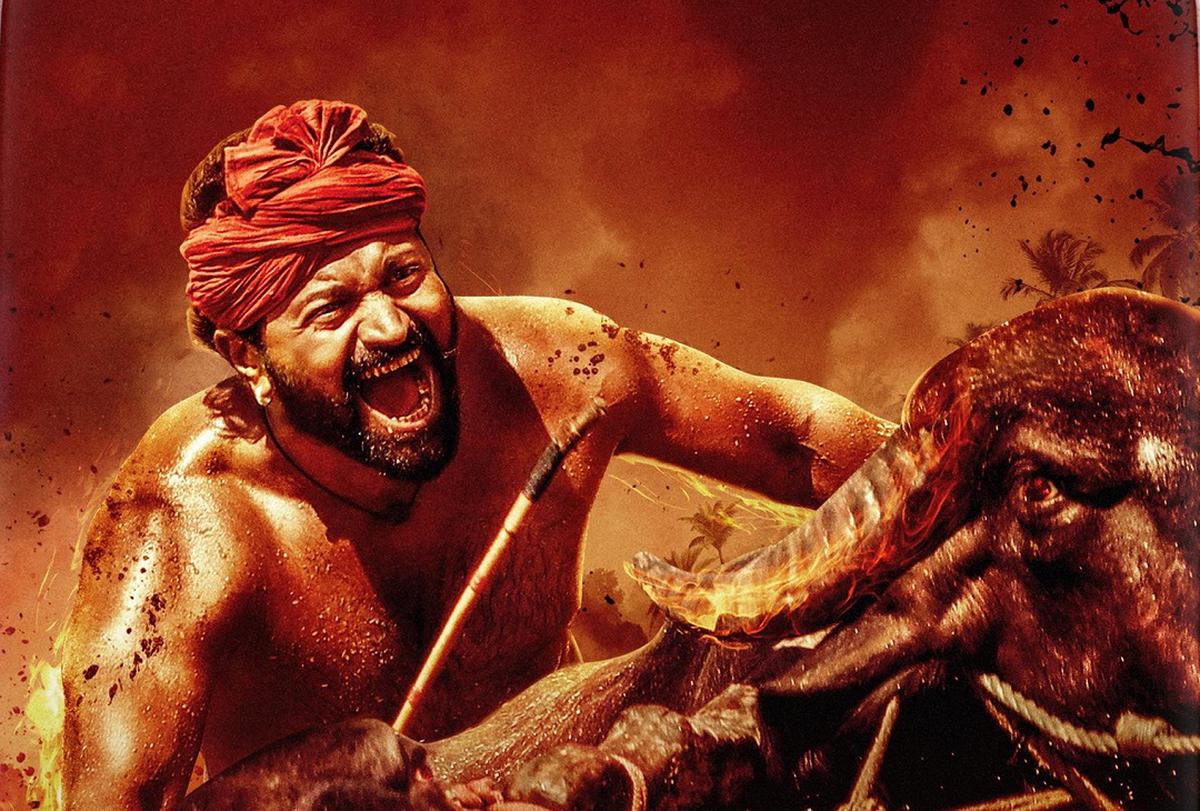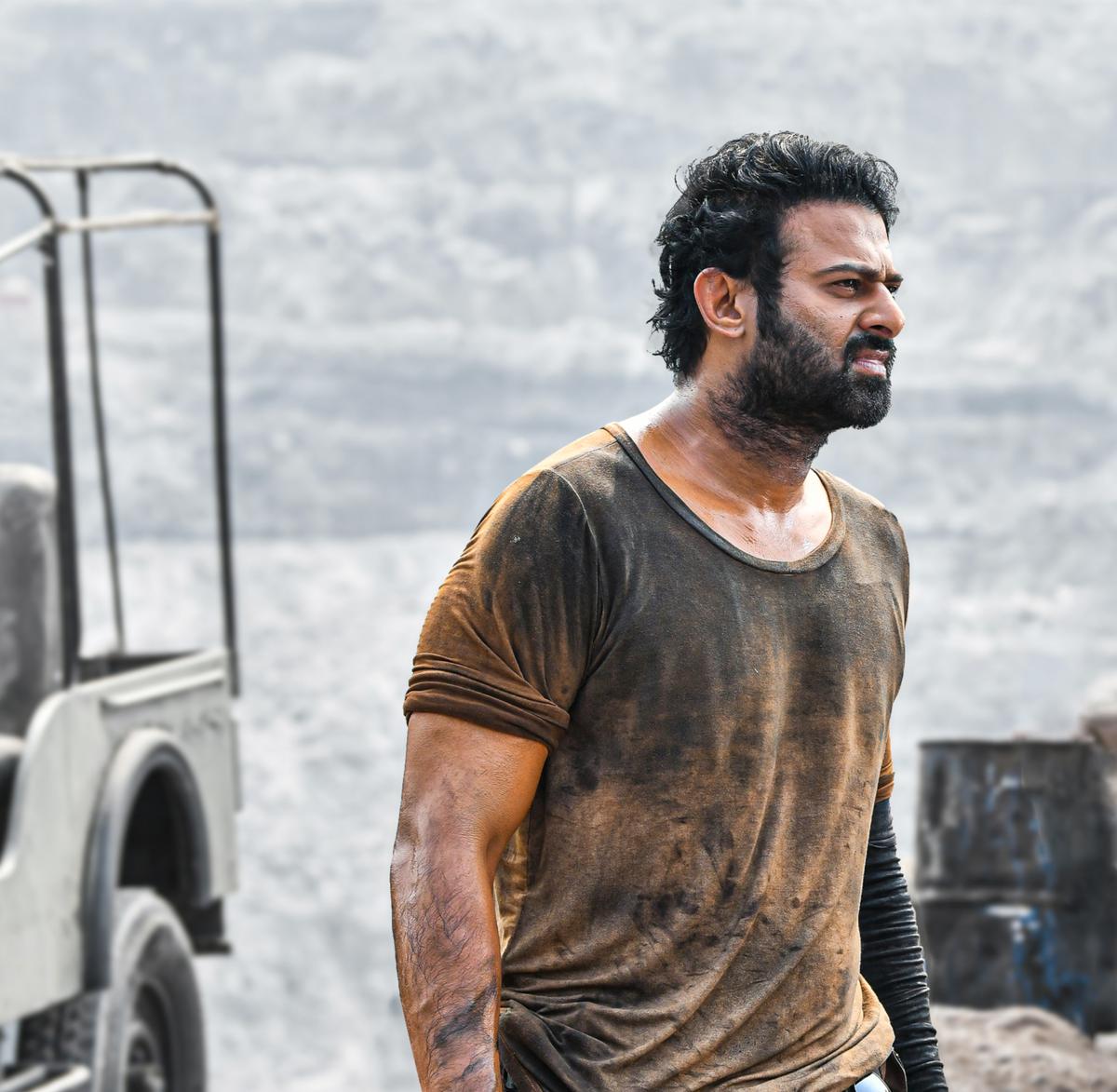From ‘KGF: Chapter 2’ to ‘Kantara,’ how 2022 became the year of Kannada cinema
2022 began and ended with a bang for the Kannada Film Industry (KFI). This year, Kannada cinema rose from being a mere afterthought in the company of its south Indian counterparts under the lazy tag of “regional cinema” to claiming its place on the table as a national force to be reckoned with.
Emboldened by the success of the KGF franchise, directors and producers in the KFI aimed for more. Kannada cinema became bigger and louder; bigger in canvas, budget and ambition, as well as louder in decibels, machismo and spectacle.
A still from ‘777 Charlie’
Yash-starrer KGF: Chapter 2, the most expensive Kannada film ever made on a budget of ₹100 crore, was undoubtedly the biggest blockbuster of the year. Meanwhile, Rakshit Shetty’s 777 Charlie and Sudeep’s Vikrant Rona also swept the box-office cashing in, and delivering on the pan-India craze that has dominated commercial releases in the last few years.
It was, however, Rishab Shetty’s Kantara, made on a small budget of ₹16 crores, that became a global phenomenon, underscoring the importance of telling culturally-rooted stories. The collective noise made Sandalwood, as the industry is better known, the undisputable talk of the town.
Success of the familiar and unfamiliar
The resounding success of KGF: Chapter 2 was not entirely unforeseen after the rousing reception to its predecessor, KGF: Chapter 1 (2018). The testosterone-fuelled sequel, set in the sprawling world of Kolar Gold Fields – deftly crafted and smartly cast by director Prashant Neel – saw the audience rushing to the theatres in droves, intrigued to know how an already larger-than-life Kannada cinema hero could be scaled to greater heights.

Rishab Shetty’s ‘Kantara’
However, as the year inched to a close, the unexpected triumph of Kantara left everyone, including its makers, stumped. Directed and performed by Rishab Shetty, this fantasy thriller weaved a story of power, oppression and land rights with coastal Karnataka’s ritualistic tradition of Bhootaaradhane, which, for once, was more than just a mystical prop to drive the narrative. In Kantara, Indian cinema got its biggest surprise; a small budget film that did massive numbers.
While KGF raked in record-breaking box office figures as a grand, opulent tale built on a familiar, universal theme of the rise and fall of an underdog, Kantara resonated with the people because it was exotic and unfamiliar.
Maximalist cinema, maximum damage
In July of 2021, a group of film buffs congregated at a Clubhouse room to decode the pan-India success of KGF 1. “Why is KGF a big hit?” they sought to know. Two films and tens of interviews and analyses later, the answer remains elusive, but it is undeniable that KGF gave the Kannada audience a taste of maximalist, event cinema, veering the industry towards an exciting, but dangerous path.
Since 2018, riding the pan-India wave, filmmakers have attempted to recreate the success of KGF with little luck. 2022 was no different, made worse by the streaming-induced content fatigue. In a post-COVID world, filmmakers struggled to draw the audiences from the comfort of their homes back to the big screen. From love stories to action flicks, from sports dramas to biopics, from rom-coms to social commentary, Kannada cinema tried every trick in the book.
The massive successes of tentpole productions, however, failed to rub off on the theatrical fortunes of small and medium-budget Kannada films. Despite opening to good reviews, content-driven films like Sakutumba Sametha, Dollu, Kamblihula, Gilky and Guru Shishyaru, to name a few, had to settle for an OTT release following a short run in the theatres.

The poster of ‘Sakutumba Sametha’
The pan-India trend was KFI’s undoing. The common audience appeared wary of making a trip to the cinemas unless they were promised a “big screen experience.” Cinema became less about the stories, and more about the visual spectacle. With ticket and F&B prices also skyrocketing in metro centres like Bengaluru — where the multicultural, multilingual audience had no dearth of options — the local industry fell behind.
Besides, the industry’s track record of inconsistent storytelling proved to be its own nemesis. Of close to 200 films released in Kannada this year, only about 15 to 20 films were critically appreciated. Even fewer films appealed to the audience, washed out by the very wave of popularity they were trying to ride.
Looking ahead to 2023
The breakout star of 2022, however, was neither an actor nor a director but a production house. Hombale Films, the major force behind the KGF franchise and Kantara not only transformed the way films are made, but also marketed. Having established its disruptive might in Karnataka, the company is now looking beyond the horizons of the KFI.
With Hombale announcing productions in Telugu (Prabhas’ Salaar), Tamil (Keerthy Suresh’s Raghu Thatha) and Malayalam (Fahadh Faasil’s Dhoomam and Prithviraj Sukumaran’s Tyson), 2023 will be a promising year for cross-border collaborations. Many star vehicles in Kannada also await a release, among them Darshan’s Kranti, Upendra’s Kabzaa, Rakshit Shetty’s Sapta Sagaradaache Ello and Sriimurali’s Bagheera.

Prabhas in ‘Salaar’
2022 was the year of Kannada cinema. But while we celebrate the return of the angry young man, it is pertinent to ask if mid-size and smaller Kannada films have been sacrificed on the altar of his violence. The international trajectory of Kantara suggests otherwise, but its success, at best, can be described as an anomaly.
Fortune may favour the brave, but without a compelling story to tell, it is only a matter of time before the roaring, raging, rebellious hero turns hoarse and jaded.
For all the latest Entertainment News Click Here
For the latest news and updates, follow us on Google News.
